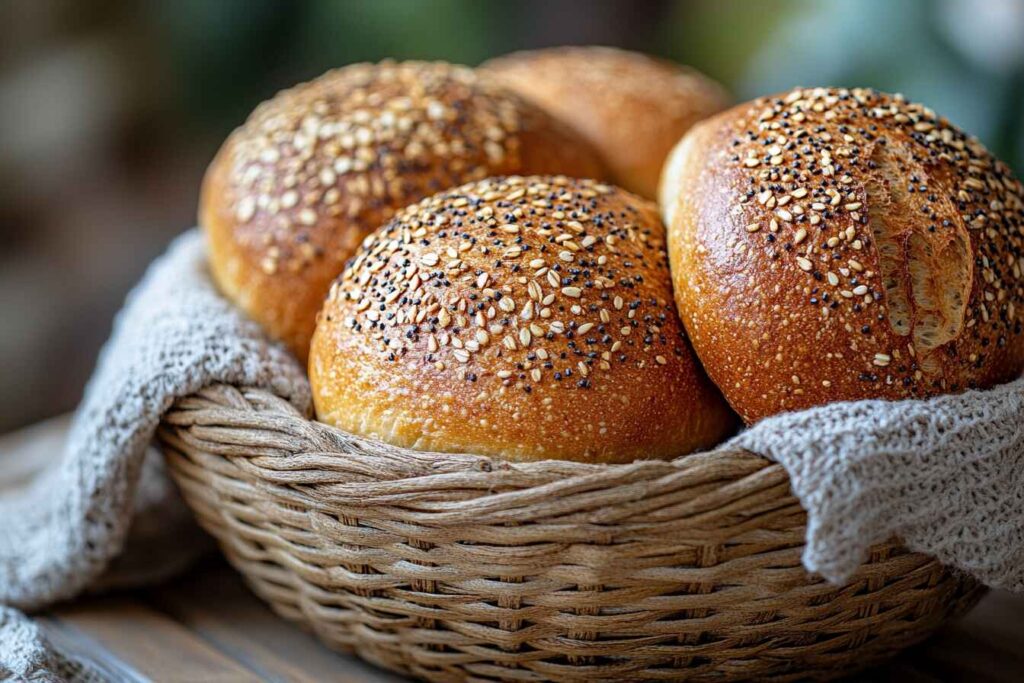Let’s face it—food choices can feel like a never-ending game of tug-of-war, especially when it comes to carbs. For years, wraps and bread have gone head-to-head in the arena of health-conscious eating. You’ve probably wondered at some point: Are wraps actually better than bread? Or is it just another food myth? Well, grab your favorite sandwich because we’re diving deep into this tasty topic!
This isn’t just about picking between two delicious options. It’s about understanding what fuels your body, what fits your lifestyle, and what leaves you feeling satisfied without the guilt. Let’s break it all down, from nutrition facts to common misconceptions, and see which one comes out on top.
Table of Contents
Why This Topic Matters in Modern Diets
Wraps and bread are staples in diets worldwide, but with the rise of low-carb and clean-eating trends, the debate has heated up. Health-conscious eaters want to know if swapping bread for wraps is worth it. Spoiler: The answer isn’t as black-and-white as you might think!
“Making informed choices about your carbs can be the difference between feeling energized or sluggish after a meal.”
Nutritional Breakdown: Wraps vs. Bread
Calories and Portion Sizes
First things first—calories. Wraps often get a reputation for being the “lighter” option, but is that true? Not always! A typical flour tortilla wrap can pack anywhere from 150 to 300 calories, depending on its size and ingredients. On the other hand, two slices of whole-grain bread usually fall within the 120 to 200 calorie range.
Sounds like bread might win this round, right? Not so fast! Wraps tend to hold more filling, which means you might end up eating fewer snacks later. Think of it as the difference between a small plate and a big bowl—portion control can make or break your diet!
Macronutrients: Carbs, Proteins, and Fats
When it comes to carbs, both wraps and bread are contenders. Bread, especially white bread, is higher in carbs, with about 12–15 grams per slice. A wrap might contain slightly less—around 20–25 grams per tortilla. But don’t let those numbers scare you! Whole-grain options provide fiber, which slows digestion and keeps you full longer.
Protein content is pretty equal between the two, but wraps can sneak in extra fat, particularly if they’re made with oils. This isn’t necessarily a bad thing, though. Fats help absorb nutrients and keep you satisfied, especially when paired with veggies or lean proteins.
| Item | Calories | Carbs | Fiber | Protein |
|---|---|---|---|---|
| Whole-Wheat Bread (2 slices) | 160 | 26g | 4g | 6g |
| Flour Tortilla Wrap (Large) | 210 | 25g | 2g | 5g |
Fiber Content: Which Keeps You Fuller?
If you’re all about staying fuller for longer, fiber is your best friend. Whole-grain bread generally wins in this category, boasting 2–4 grams of fiber per serving. Wraps often fall short, with only 1–2 grams, unless you go for specialty options like spinach or flaxseed wraps.
Here’s a pro tip: Always check the label. Some wraps are fiber-rich and perfect for a balanced diet, while others? They’re more like glorified pancakes!
Additives and Preservatives: What to Watch For
Here’s where things get tricky. Many commercial wraps and bread are loaded with additives to extend shelf life. These can include dough conditioners, stabilizers, and preservatives. While they won’t necessarily harm you in small amounts, they’re not exactly “natural.”
“If you can’t pronounce it, do you really want to eat it? Stick to options with fewer than five ingredients when possible.”
Health Benefits: Wraps vs. Bread
When Wraps Are the Healthier Option
Wraps can shine in certain scenarios, especially when you choose healthier varieties like whole-grain, flaxseed, or spinach-based options. These wraps often have lower glycemic indexes, meaning they won’t spike your blood sugar as quickly as white bread might.
They’re also perfect for portion control if you prefer an all-in-one meal. You can load up on lean proteins, healthy fats, and fresh veggies without worrying about overstuffing two slices of bread.
When Bread Comes Out on Top
Bread, particularly whole-grain or sourdough, offers a distinct advantage with its high fiber content. Fiber helps maintain gut health and can reduce the risk of heart disease. Plus, sourdough bread is a favorite among nutritionists for its natural fermentation process, which aids digestion.
Another win for bread? Its simplicity. Bread often contains fewer additives than wraps, especially if you’re buying from a local bakery or making it yourself.
Common Misconceptions About Wraps and Bread
Are Wraps Always Low-Calorie?
Not necessarily! Many store-bought wraps are larger than two slices of bread and can contain hidden calories from oils, sugar, or enriched flours. Always read the nutrition label to ensure you’re making a truly lighter choice.
Is Bread Always Unhealthy?
Bread has gotten a bad rap in recent years, especially with the popularity of low-carb diets. However, whole-grain and sourdough options are packed with nutrients. The key is moderation and quality. Avoid overly processed white bread with minimal nutritional value.
Wraps and Bread in Different Diets
Keto and Low-Carb Diets
If you’re on a low-carb or keto diet, wraps made from almond flour, coconut flour, or cheese are game-changers. Traditional bread, even whole-grain, usually contains too many carbs for strict keto followers.
Gluten-Free Options: Wraps vs. Bread
Both wraps and bread are available in gluten-free versions, but wraps often have the upper hand in texture and pliability. Gluten-free bread can sometimes be dense and crumbly, while gluten-free wraps maintain their structure better.
Vegan and Plant-Based Considerations
For plant-based eaters, both wraps and bread can be excellent options. Just be cautious of hidden animal-based ingredients like whey or eggs in certain wraps or bread varieties. Whole-grain and vegetable wraps are often vegan-friendly.

Convenience and Versatility
Wraps: Perfect for On-the-Go Meals
One of the biggest advantages of wraps is their portability. Whether it’s a burrito, a quesadilla, or a veggie wrap, they’re ideal for quick, mess-free meals.
Bread: A Staple for Home-Cooked Comfort
Bread, on the other hand, is the foundation of countless comforting dishes, from grilled cheese to hearty sandwiches. It’s versatile enough to be part of a simple breakfast or a gourmet dinner.
Environmental and Ethical Considerations
Which Has a Smaller Carbon Footprint?
Wraps and bread differ slightly in their environmental impact. Wraps often have a larger footprint due to their manufacturing process and packaging. Bread, especially homemade or locally sourced, tends to be more sustainable.
Packaging and Waste Concerns
Wraps typically come in plastic packaging, which is less eco-friendly compared to paper-wrapped bread. If sustainability is a priority, consider buying from bakeries or making your own to reduce waste.
Common Problems and Solutions
Wraps Falling Apart: How to Fix It
One common issue with wraps is their tendency to break or tear. To prevent this, warm your wrap slightly before filling it and avoid overstuffing.
Bread Staling Quickly: Storage Tips
For bread lovers, stale bread is a common annoyance. Store bread in a breadbox or freeze it in slices to maintain freshness for longer.

Tips for Making Healthier Choices
What to Look for on Nutrition Labels
When shopping, prioritize wraps and bread with minimal ingredients, whole grains, and no added sugars or hydrogenated oils. Look for at least 3 grams of fiber per serving.
DIY Recipes: Homemade Wraps and Breads
Nothing beats homemade! Try making whole-wheat wraps with just flour, water, and olive oil. For bread, a simple sourdough recipe can elevate any meal.
Expert Opinions on Wraps vs. Bread
Nutritionists’ Views
Many nutritionists agree: It’s not about wraps vs. bread—it’s about the quality of the option you choose. Whole-grain and minimally processed options are best.
Chefs’ Preferences and Tips
Chefs often favor wraps for creative presentations and portability but turn to bread for its texture and flavor complexity in gourmet dishes.
Conclusion: Which Is Right for You?
Wraps vs. Bread: No One-Size-Fits-All Answer
Ultimately, the choice between wraps and bread depends on your dietary needs, preferences, and lifestyle. Both have their merits when consumed in moderation and with mindful selection.
Personalize Based on Your Lifestyle and Goals
Whether you’re grabbing a wrap for a quick lunch or enjoying artisan bread with your dinner, the key is balance. Know your goals, read labels, and enjoy your carbs guilt-free!
Frequently Asked Questions (FAQs)
Are wraps gluten-free?
Not all wraps are gluten-free. Look for options made with almond, coconut, or gluten-free flours.
Can wraps replace bread in all recipes?
Wraps can work in many dishes, but their texture may not suit recipes like French toast or bread pudding.
How to make your own healthy wraps or bread?
Homemade wraps and bread are simple to make and allow you to control ingredients. Start with basic whole-grain recipes.

